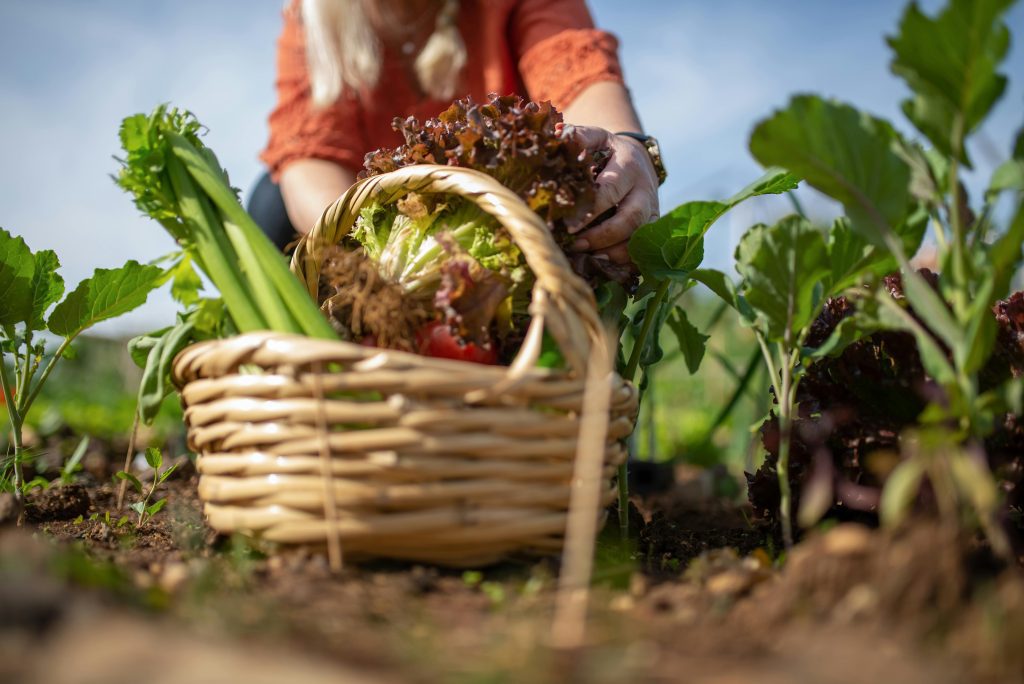If you’ve ever wondered what to do every morning in your garden to keep it thriving (and your soul happy), this is your guide.
I’ll be providing real, actionable steps I take every single day, so whether you’re a beginner or a seasoned gardener, these routines will help you garden better and start your day right.
Setting the Tone for a Productive Garden Morning
I wake up early – sometimes before sunrise – because those first quiet hours are golden.
The light is soft, the temperature is cool, and the garden feels like it’s just for me.
This is because:
- Cooler temperatures mean less stress on plants (and you!).
- Morning dew helps with hydration before the sun dries everything out.
- Wildlife is active, birds, bees, and beneficial insects are out, making it the perfect time to observe and learn.
My Essential Morning Garden Gear
I keep these items ready so I don’t waste time searching:
- A sturdy apron (with pockets for pruners, twine, and my phone).
- Sharp bypass pruners (for clean cuts).
- A moisture meter (optional, but great for precision).
- A small notebook (to jot down observations).
The Hydration Check: Watering the Right Way
Watering seems simple, but doing it wrong can drown plants or leave them thirsty.
Here’s my method.
Step 1: The Finger Test
I stick my finger 1-2 inches into the soil near the base of each plant. If it’s dry, it’s time to water.
If it’s damp, I check again later.
Step 2: Prioritizing Thirsty Plants
Some plants need more attention:
- Seedlings and new transplants (shallow roots dry out fast).
- Potted plants (they lose moisture quicker than in-ground ones).
- Leafy greens (like lettuce, which wilts fast in heat).
Step 3: Watering Deeply (Not Just Surface-Level)
I water at the base (not the leaves) to prevent fungal diseases.
Slow and steady wins. I let the water soak in rather than flooding.
Morning is best so plants hydrate before the midday sun.
💡Pro Tip: If I’m short on time, I use a soaker hose or drip irrigation system (set on a timer) to automate morning watering.
The Inspection Tour: Catching Problems Early
A quick walk-through helps me spot issues before they become disasters.
– Pest Patrol
- Check under leaves (aphids love hiding there).
- Look for chewed edges (slugs and caterpillars leave clues).
- Watch for sticky residue (a sign of sap-sucking insects).
If I find pests, I remove them by hand or spray with neem oil (a natural pesticide).
– Growth Watch
- If I notice new buds, I celebrate (and maybe take a photo).
- If the leaves are yellow, it could be a sign of overwatering or nutrient deficiency.
- If the plants are leggy, they might need more sunlight.
– Soil Check
- If there’s mulch breakdown, I add more if it’s thinning.
- If the soil is compacted, I gently aerate with a fork.
- If there are weeds sprouting, I pull them now before they spread.
Hands-On Care: Pruning, Weeding & Training Plants
Now that I’ve checked hydration and pests, it’s time to get my hands dirty.
1. Deadheading & Pruning:
Every morning, I grab my pruners and:
- Snip off spent flowers (marigolds, roses, petunias) to encourage new blooms.
- Trim yellowing leaves (prevents disease spread).
- Cut back aggressive growers (like mint or basil) to keep them bushy.
Why This Works: Plants focus energy on new growth instead of maintaining dying parts.
2. Weeding:
Weeds steal nutrients and water, so I:
- Pull them after watering (soil is softer, roots come out easier).
- Get the whole root (or they’ll grow back).
- Toss them in compost (if they’re not seeding).
💡Pro Tip: I keep a hori-hori knife nearby for stubborn weeds because it digs deep without disturbing nearby plants.
3. Supporting Weak or Climbing Plants:
Some plants need a little help standing tall:
- Tomatoes and Peppers: I check ties on stakes/cages (loose ones can damage stems).
- Cucumbers and Beans: I gently wrap vines around trellises.
- Floppy Flowers: I use soft twine to prop up heavy blooms.
Harvesting Morning Bounty (When Applicable)
If you grow edibles, mornings are prime picking time. Overnight coolness keeps greens crisp and herbs flavorful.
– What I Harvest at Dawn:
- Leafy greens (lettuce, spinach) – before sun wilts them.
- Herbs (basil, mint, cilantro) – oils are most potent.
- Berries and peas – plump with morning dew.
– How I Do It:
- Use scissors (clean cuts prevent damage).
- Take only 1/3 of the plant (so it keeps producing).
- Rinse immediately if using for breakfast (nothing beats fresh mint in tea!).
Feeding for Long-Term Plant Health
Plants get hungry, and mornings are ideal for feeding because:
- Nutrients absorb better in cool, moist soil.
- Plants have all day to process food before night.
– My Fertilizer Routine:
- Compost tea (weekly for veggies).
- Liquid seaweed (biweekly for stressed plants).
- Granular organic fertilizer (monthly for heavy feeders like tomatoes).
Key Rule: I never fertilize dry soil. Always water first to prevent root burn.
Journaling and Planning Ahead
A 5-minute log saves hours of guesswork later. I use a weatherproof notebook to track:
- Today’s tasks (e.g., “Plant pepper seeds”).
- Growth notes (e.g., “First tomato flower!”).
- Problems spotted (e.g., “Whiteflies on bitter leaf – treat tonight”).
Bonus: I sketch layout changes (like swapping basil for curry next season).
Final Thoughts
Doing this every morning means:
- Fewer emergencies (catch pests/diseases early).
- Healthier plants (consistent care = strong growth).
- Deeper connection (you’ll notice subtle changes).
Your Turn: Try just ONE thing from this routine tomorrow like the 2-minute inspection or morning harvest. See how it feels!
